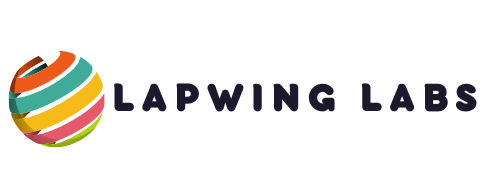Rosetta Stone vs Babbel vs Duolingo
When learning a new language, many options are available in the market. Three popular language learning apps are Rosetta Stone, Babbel, and Duolingo. In this article, I will compare and contrast these three apps to help determine which is the best fit for language learners.
Rosetta Stone has been a popular language learning tool for over 25 years. The app’s immersive language learning approach is based on pictures, sounds, and words. To learn the language, the user must match the picture with the word corresponding to the image. However, Rosetta Stone can be expensive, starting at $35 per month, which may not be affordable for everyone.
Conversely, Babbel is a more affordable option, starting at $6.95 per month. One of the main advantages of using Babbel is that it’s designed for learning real-life conversations. It has courses based on your profession or interests, making the learning process more practical. In addition, Babbel offers grammar explanations, which makes it possible to understand how to use the language in context. The app’s only downside is the limited vocabulary, and it doesn’t have a speech recognition feature for pronunciation practice.
Duolingo, a free language-learning app, is known for its ease of use and gamification approach. The app is structured like a game; the more you progress, the more points you can earn and use to unlock new levels. Duolingo offers a wide range of languages to learn, and it’s ideal for beginners who want to gain basic knowledge of a language. While it may not be as comprehensive as its competitors, the app’s user-friendly interface and accessibility make it an appealing option.
Rosetta Stone Features
Rosetta Stone is an e-learning platform that helps users to learn foreign languages interactively and engagingly. The platform offers a range of features that make the learning process efficient and effective. Here are some of the noteworthy features of Rosetta Stone:
Language immersion: Rosetta Stone uses the immersion method of language learning, meaning that users learn the language they wish to learn the same way native speakers learn it. The platform uses pictures, audio, and text to deliver language instruction contextually and intuitively.
Speech recognition technology: Rosetta Stone uses speech recognition technology to help users develop their speaking and pronunciation skills. The platform analyzes voices to provide feedback on pronunciation and tone, helping users perfect their conversational skills.
Mobile apps for learning on the go: Rosetta Stone provides mobile apps for learning on the go. This feature offers flexibility and convenience to users, enabling them to take their language learning with them wherever they go.
Easy access to online tutors: Rosetta Stone gives users access to online tutors who can help them practice speaking with native speakers. This feature contributes towards making the learning process more interactive and engaging.
Personalized learning experience: Rosetta Stone’s Adaptive Recall feature helps users learn new words and phrases by assessing their knowledge and retention. This feature allows users to proceed through the course at their own pace, ensuring they master the material before moving on.
Compared to Babbel and Duolingo, Rosetta Stone offers a more immersive language learning experience driven by its language immersion feature. It is useful for users seeking conversational fluency in their targeted language. Rosetta Stone’s speech recognition technology, mobile apps, online tutoring, and adaptive learning also make it stand out among its competitors. However, these features come at a premium price compared to Babbel and Duolingo.

Babbel Teaching Method
Babbel is a language learning platform that boasts a communicative approach to teaching. Its main goal is to get learners speaking their target language as soon as possible. The platform offers courses in various languages, with personalized lessons tailored to each user’s needs.
Babbel’s teaching method emphasizes practical conversation skills, focusing on vocabulary and grammar. The lessons are structured around real-life scenarios, such as ordering food at a restaurant or asking for directions. Babbel’s approach is designed to be engaging and interactive, with lessons that include audio recordings, images, and written exercises to reinforce learning.
Unlike Duolingo, which relies on a gamified approach to language learning to keep users engaged, Babbel takes a more traditional approach. While some aspects of gamification are built into Babbel’s platform, such as earning points and unlocking new lessons as users progress, the main focus is serious language learning.
One of the strengths of Babbel’s teaching method is the platform’s use of native speakers to record its audio content. This ensures that learners are exposed to authentic accents and pronunciations from the beginning. Additionally, Babbel’s lessons are designed to build on one another, with each new piece of vocabulary and grammar building on what has been previously learned.
Regarding efficacy, a study by the City University of New York found that learners who used Babbel’s platform for 15 hours showed improvement equivalent to one college semester of language study. While individual results may vary, this study suggests that Babbel’s teaching method is effective for learners willing to invest the time and effort.
Overall, Babbel’s communicative approach to language learning is a solid option for those looking for a more traditional, grammar-focused approach to language learning. While it may not be as gamified as Duolingo or as immersive as Rosetta Stone, Babbel’s strength lies in its well-structured lessons and emphasis on practical conversation skills.
Duolingo Gamification
Duolingo is an excellent language-learning platform with a highly gamified approach to help users learn and become proficient in a new language. Its unique gamification approach is one of the factors that sets it apart from other language-learning software such as Rosetta Stone and Babbel.
The gamification aspect of Duolingo is a significant contributor to its success, particularly among younger users. The platform features a colorful and engaging interface that keeps users motivated and returning for more. In addition, its arcade-style games and interactive lessons help to make language learning fun, instead of being a dull, repetitive chore.
One of the most prominent features of Duolingo’s gamification approach is its point system. Users earn points for correctly answering questions, completing modules and achieving daily goals, which helps to incentivize progress and keep users motivated. In addition, the competitive spirit among users is encouraged by the ability to compare scores with friends and the wider Duolingo community.
Another aspect of Duolingo’s gamification strategy is its use of streaks. This feature tracks and displays a user’s consecutive days of language practice, adding a sense of achievement and incentivizing users to keep up their daily practice. In addition, longer streaks increase motivation by challenging users to continue a commitment to learning.
Finally, Duolingo has incorporated “hearts” into the learning process, which are required to progress through the learning modules. Users are granted five hearts per day to make mistakes before losing progression in their learning. Once all the hearts have been used, users will need to spend some time practicing prior lessons to earn them back again. This fantastic feature encourages users to keep practicing, reinforcing earlier lessons, and ensuring comprehensive learning.
In conclusion, Duolingo’s gamification strategy is integral to its success as a language-learning platform. With its vibrant and engaging interface, point system, streaks, and hearts, Duolingo has found a way to make language learning a fun and addictive pastime. Moreover, the gamification of the whole process leaves users learning a new language while having a good time.

Conclusion
After diligently exploring the three language learning platforms, Rosetta Stone, Babbel, and Duolingo, it’s clear that each service has its unique strengths and weaknesses that depend heavily on the user’s learning goals, schedule, and preferred learning style.
While Rosetta Stone stands out for its proven effectiveness in teaching fundamental grammar and vocabulary through an immersive experience, it comes with a high price tag and limited conversational practice.
Babbel, on the other hand, offers a more affordable, structured, and comprehensive course that emphasizes real-life communication skills, although it, too, lacks significant exposure to native accents and speaking exercises.
Lastly, Duolingo excels in its gamified, playful, and engaging approach, making learning less intimidating, more enjoyable, and accessible to everyone. However, it may not be suitable for intermediate or advanced learners due to its simplistic exercises and lack of personalized feedback and cultural context.
Therefore, evaluating your needs and preferences is essential when choosing among these three platforms. Regardless of your choice, remember that consistent and intentional practice is the key to mastering any language. Happy learning!



